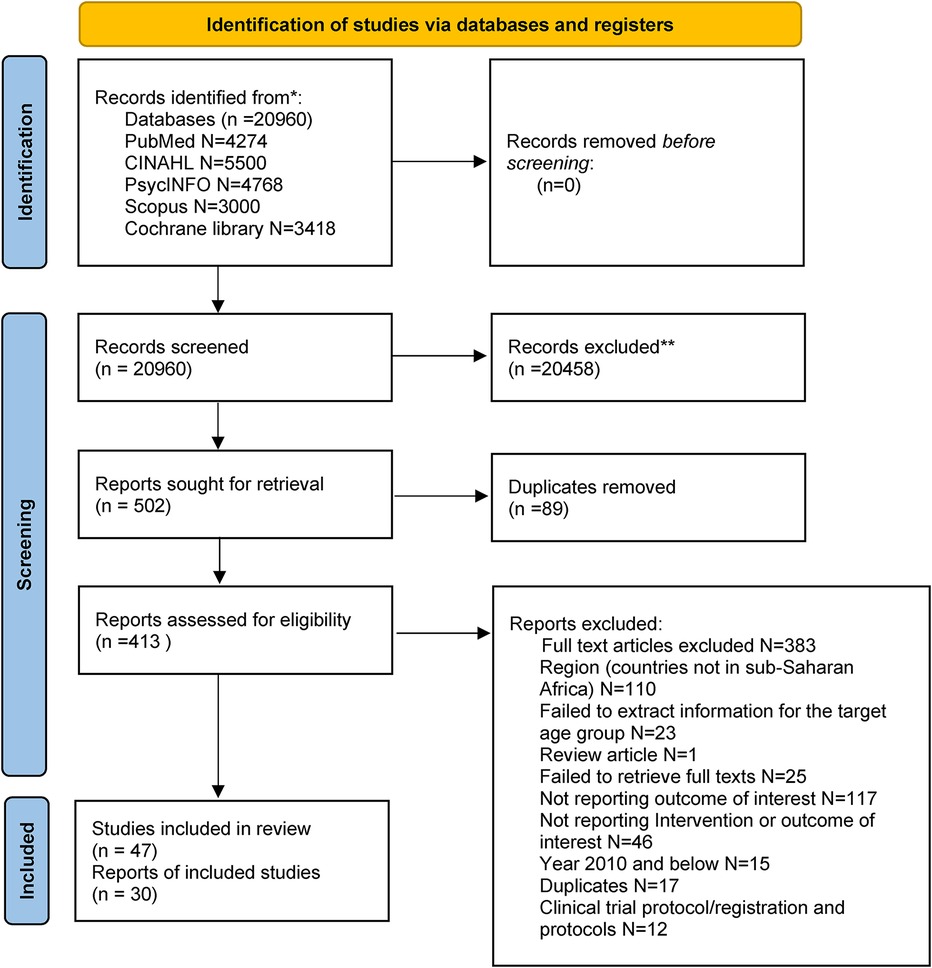Investing in Sexual and Reproductive Health is Key to Nigeria’s Health and Growth – Medium

Report on Strategic Approaches to Sexual and Reproductive Health and Rights (SRHR) in Nigeria
The Critical Link Between SRHR and Sustainable Development Goals
Investment in Sexual and Reproductive Health and Rights (SRHR) is fundamental to Nigeria’s achievement of several key Sustainable Development Goals (SDGs). Progress in SRHR directly impacts the attainment of:
- SDG 3: Good Health and Well-being
- SDG 4: Quality Education
- SDG 5: Gender Equality
- SDG 10: Reduced Inequalities
The urgency of this issue is magnified by Nigeria’s demographic profile, with approximately 70% of the population being youth. Despite this, access to modern contraceptives and youth-centric SRHR services remains critically low, posing a significant barrier to sustainable development.
Current Status of SRHR Access and Unmet Needs
Data from the 2023 Nigeria Demographic and Health Survey (NDHS) reveals significant gaps in SRHR service delivery, which directly undermines progress towards SDG 3 and SDG 5.
- Modern Contraceptive Prevalence Rate (mCPR): The mCPR is only 14% among married women and a stark 3.3% among adolescent girls aged 15–19.
- Unmet Need for Family Planning: The unmet need for family planning services is alarmingly high across various age groups, indicating a failure to provide essential health services.
- Adolescents (15–19): 15.8%
- Young Women (20–24): 21%
- Women (30–34): 22%
These statistics were a central focus of the Nigeria Health Watch policy dialogue, “Closing Reproductive Health Impact Gaps: Strategic Approaches for Equity and Access,” where stakeholders identified challenges and proposed strategies to improve equitable access to SRHR services.
Economic and Fiscal Dimensions of SRHR Investment
The Economic Case for Family Planning and SDG Alignment
SRHR is not merely a health concern but an economic imperative. Empowering women and girls to make informed decisions about their reproductive health generates substantial economic benefits, contributing to poverty reduction (SDG 1) and economic growth (SDG 8). Evidence indicates that for every additional US$1 invested in fulfilling the unmet need for modern contraception, healthcare costs are reduced by US$3. As noted by Vivianne Ihekweazu, Managing Director at Nigeria Health Watch, the goal of Universal Health Coverage (UHC), a key target of SDG 3, cannot be realized without universal access to SRHR.
Barriers faced by young people—including limited knowledge, social stigma, and lack of confidential, youth-friendly services—hinder their ability to contribute fully to the economy and society, thereby impeding progress on SDG 4 and SDG 5.
National Funding Challenges and Commitments
A significant challenge is the drastic reduction in Nigeria’s national family planning budget, which was cut by 97% from ₦2.225 billion in 2024 to ₦66.39 million for 2025. This severe funding shortfall threatens to reverse progress, exacerbate commodity stock-outs, and jeopardize the nation’s FP2030 commitments. In response, Dr. Binyerem Ukaire of the Federal Ministry of Health and Social Welfare highlighted government efforts to mitigate these gaps. Through the Presidential Initiative for Unlocking the Healthcare Value Chain, the Medipool initiative is deploying US$6 million for the procurement of family planning commodities and to improve logistics management systems.
Sub-National Innovations and Systemic Barriers
Case Studies in Domestic Financing
Innovative domestic financing models at the sub-national level offer scalable solutions for sustainable SRHR funding.
- Kano State: The state has successfully improved access to family planning by allocating resources from the Kano State Health Trust Fund, which pools funds from all 44 local governments. This has led to the creation of a dedicated budget line for family planning and a tripartite funding partnership with the Gates Foundation and other partners.
- Ogun State: Despite receiving minimal donor support ($0.04 per capita), Ogun State is leveraging the Basic Health Care Provision Fund to finance essential SRHR services. Dr. Tomi Coker, the state’s Commissioner for Health, emphasized a strategy of financial independence to ensure the sustainability of health programs, a model that strengthens local ownership and resilience in achieving SDG 3.
Persistent Systemic Challenges
Despite these innovations, systemic barriers remain. Dr. Taiwo of The Challenge Initiative (TCI) Nigeria noted that budget allocations do not always translate to fund release and effective utilization. Across the country, procurement delays and fragmented supply chains lead to frequent stock-outs of family planning commodities, with some states reporting stock-out rates as high as 60–70%. This undermines service quality, erodes public trust, and directly obstructs the achievement of health-related SDGs.
Strategic Approaches for Youth-Friendly SRHR Services
Innovative Service Delivery Models
To effectively reach young people, context-specific innovations are essential. Models like the Machakos Youth Drop-in Centre in Kenya provide a blueprint for creating judgment-free, youth-friendly environments. In Nigeria, Healthtracka is addressing the issue of stigma with discreet, self-testing STI kits (“Lemon kit”), allowing young women to access screening services confidentially. These initiatives are crucial for ensuring the health and well-being of adolescents, a key component of SDG 3.
The Role of Education and Digital Tools
Expanding comprehensive sexuality education is vital for empowering young people with accurate information, which is a cornerstone of SDG 4 (Quality Education). In Africa, where one in five girls becomes pregnant before age 19, quality education is proven to lead to safer and more informed choices. The Ministry of Education is collaborating with the Ministry of Health to deliver the Family Life and HIV Education curriculum, integrating classroom instruction with in-school health services.
Digital tools are also critical for expanding access and ensuring confidentiality. Dr. Fatima Bunza of Tiko Nigeria highlighted a multi-pronged approach combining high-tech, low-tech, and no-tech solutions. Physical Tiko cards, for instance, enable girls without mobile phones to access SRHR services, ensuring that no one is left behind and advancing SDG 10 (Reduced Inequalities).
Conclusion: Closing the SRHR Impact Gap for Sustainable Development
With declining donor support and a population projected to nearly double by 2050, strategic investment in SRHR is more critical than ever for Nigeria. Failure to act will deepen poverty and inequality and prevent millions from realizing their fundamental reproductive rights, thereby stalling progress across the SDGs. By scaling proven domestic financing models, fostering inclusive partnerships, and centering youth in program design, Nigeria can close the existing impact gaps. This strategic shift will position SRHR not as a cost, but as a powerful catalyst for achieving national health, gender equality, and economic growth targets aligned with the 2030 Agenda for Sustainable Development.
Analysis of Sustainable Development Goals in the Article
1. Which SDGs are addressed or connected to the issues highlighted in the article?
The article on Sexual and Reproductive Health and Rights (SRHR) in Nigeria addresses several Sustainable Development Goals (SDGs), both explicitly and implicitly.
-
SDG 3: Good Health and Well-being
This is the most central SDG discussed. The article’s entire focus is on sexual and reproductive health, family planning, and access to healthcare services, which are core components of ensuring healthy lives and promoting well-being for all at all ages.
-
SDG 4: Quality Education
The article explicitly mentions this SDG. It highlights the importance of “comprehensive sexuality education” and the “Family Life and HIV Education curriculum” to empower young people with accurate information, which directly contributes to quality education.
-
SDG 5: Gender Equality
This SDG is also explicitly mentioned. The article frames SRHR as a key to gender equality, emphasizing that when women and girls can “decide if, when, and how many children to have,” it empowers them and enhances their ability to participate in economic and social life.
-
SDG 10: Reduced Inequalities
The article explicitly names this SDG. The dialogue’s theme, “Closing Reproductive Health Impact Gaps: Strategic Approaches for Equity and Access,” directly addresses the need to reduce inequalities in healthcare access, particularly for youth and across different geographic regions in Nigeria.
-
SDG 1: No Poverty
The article implicitly connects to this goal by stating that the rapid population growth without corresponding investment in SRHR “deepens poverty.” Investing in family planning is presented as a strategy to combat poverty.
-
SDG 8: Decent Work and Economic Growth
This goal is linked through the argument that SRHR is an “economic imperative” and a “driver of economic resilience and national productivity.” Better maternal health and higher school completion rates for girls, resulting from SRHR access, lead to a more resilient economy.
-
SDG 17: Partnerships for the Goals
The article showcases the importance of partnerships by highlighting collaborations between the government, international partners (Gates Foundation), civil society, and the private sector (Healthtracka) to improve SRHR outcomes.
2. What specific targets under those SDGs can be identified based on the article’s content?
-
Target 3.7: Ensure universal access to sexual and reproductive health-care services.
The article is centered on this target. It discusses the challenges and strategies related to providing “universal access to sexual and reproductive health-care services, including for family planning, information and education.” The low contraceptive prevalence rate and high unmet need for family planning are key issues addressed in relation to this target.
-
Target 5.6: Ensure universal access to sexual and reproductive health and reproductive rights.
This target is directly supported by the article’s emphasis on empowering women to “make informed decisions about their family size” and realizing their “reproductive rights.” The discussion on removing barriers like social stigma and lack of confidentiality for young people seeking SRHR services aligns with ensuring these rights.
-
Target 4.7: Ensure all learners acquire knowledge and skills needed for sustainable development.
The article’s focus on “expanding comprehensive sexuality education” and implementing the “Family Life and HIV Education curriculum” directly contributes to this target, which includes education for gender equality and human rights.
-
Target 10.2: Empower and promote the social, economic and political inclusion of all, irrespective of age.
The article’s call for “youth-friendly services” and addressing the specific barriers faced by adolescents (aged 15-19) in accessing SRHR services is a clear effort to promote the inclusion of this age group, which is often left behind.
-
Target 17.17: Encourage and promote effective public, public-private and civil society partnerships.
The article provides concrete examples of this target in action, such as Kano State’s “tripartite funding partnership with the Gates Foundation” and Healthtracka’s partnership with pharmacy chains to distribute self-testing kits.
3. Are there any indicators mentioned or implied in the article that can be used to measure progress towards the identified targets?
Yes, the article mentions several quantitative and qualitative indicators that can be used to measure progress:
-
Modern Contraceptive Prevalence Rate (mCPR)
The article cites the 2023 NDHS data: “mCPR among married women is 14%, and 3.3% among adolescent girls aged 15–19.” This is a direct indicator for Target 3.7.
-
Unmet Need for Family Planning
The article provides specific figures: “15.8% among adolescents aged 15–19… rising to 21% among women aged 20–24 and 22% among those aged 30–34.” This measures the gap in access and is a key indicator for Targets 3.7 and 5.6.
-
Government Budget Allocation
The “national family planning budget has been reduced by 97% from the ₦2.225 billion allocated in 2024 to ₦66.39 million in 2025.” This financial commitment is a critical indicator of government priority and progress.
-
Commodity Stock-Out Rate
The statement that “some states have 60–70% stock out of family planning commodities” is a crucial supply chain indicator that measures the functionality of the healthcare system in delivering services (Target 3.7).
-
Adolescent Pregnancy Rate
The statistic that “one in every five girls [in Africa] becomes pregnant before the age of 19” serves as an outcome indicator for the effectiveness of SRHR education and services (Targets 3.7, 4.7, and 5.6).
-
Existence of National Policies and Curricula
The mention of “Nigeria’s progressive policies and FP commitments” and the “Family Life and HIV Education curriculum” are indicators of a legal and educational framework supporting SRHR, relevant to Indicator 5.6.2.
4. Table of SDGs, Targets, and Indicators
| SDGs | Targets | Indicators |
|---|---|---|
| SDG 3: Good Health and Well-being | Target 3.7: Ensure universal access to sexual and reproductive health-care services, including for family planning, information and education. |
|
| SDG 4: Quality Education | Target 4.7: Ensure all learners acquire knowledge and skills needed for sustainable development, including through education for gender equality and human rights. |
|
| SDG 5: Gender Equality | Target 5.6: Ensure universal access to sexual and reproductive health and reproductive rights. |
|
| SDG 10: Reduced Inequalities | Target 10.2: Empower and promote the social, economic and political inclusion of all, irrespective of age. |
|
| SDG 17: Partnerships for the Goals | Target 17.17: Encourage and promote effective public, public-private and civil society partnerships. |
|
Source: nigeriahealthwatch.medium.com

What is Your Reaction?
 Like
0
Like
0
 Dislike
0
Dislike
0
 Love
0
Love
0
 Funny
0
Funny
0
 Angry
0
Angry
0
 Sad
0
Sad
0
 Wow
0
Wow
0
























;Resize=805#)






















































